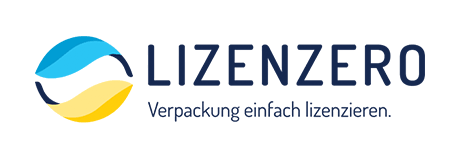VAT eCommerce & One Stop Shop – What does it mean?

International shipping is an important economic growth factor, especially for the e-commerce sector. The EU has also recognized this and has therefore adjusted its tax regulations accordingly since July 2021. In addition to fulfilling the requirements of the German Packaging Act (VerpackG) or the German Packaging Ordinance (DSGVO), for example, retailers are now subject to additional obligations as soon as they ship products to end consumers in other EU countries.
What exactly has changed since July 01, 2021? We summarized all important news including an explanation of the new One-Stop-Shop procedure for you.
Content
- VAT in the EU: Previous regulations for retailers
- VAT-eCommerce Package: VAT regulation for the EU since July 2021
- Threshold regulation 2021: This has to be done up to the threshold of EUR 10.000.
- One-Stop-Shop-Procedure (OSS): This has to be done from the threshold of EUR 10.000 on
- Special cases in online trade: What should be considered when using fulfilment abroad?
- No change for sales to non-EU third countries
VAT in the EU: Previous regulations for retailers
Previously, if a retailer sold products to European consumers across borders, the products had to be taxed up to certain turnover thresholds in the country they were dispatched. If this threshold was exceeded, the goods had to be taxed in the destination country. Each EU country had defined different turnover thresholds for this purpose – as a rule, however, the limit was an annual turnover of EUR 35,000 or EUR 100,000.
Example: If a German company sent goods with a turnover value of more than EUR 35,000 per year to France, the company had to register with the French tax office and pay the French turnover tax (20 %) to France. If the turnover threshold of EUR 35,000 had not been exceeded, the company paid the German turnover tax (19 %, or currently 16 %) to the German state.
Furthermore, companies from third countries were previously exempt from tax on goods whose value is less than EUR 22.
As of July 1, 2021, these regulations have changed to a large extent, so that the VAT-eCommerce Package adopted in 2017 now applies to all EU countries.

VAT-eCommerce Package: VAT regulation for the EU since July 2021
The turnover thresholds of the individual countries described above have now been replaced by an EU-wide turnover threshold of EUR 10,000 (net)/year since July 01, 2021. This means: As soon as an individual company exceeds this threshold in one EU country, it must fulfil its tax obligations in the country of destination.
In addition, traders who have so far fallen below the individual country turnover thresholds, but generate a total turnover of more than EUR 10,000 in the entire EU area, now have to pay tax on their products in the respective destination country for a cross-border B2C delivery (for more details on the turnover threshold, see "Threshold regulation 2021 "). A cumulative turnover threshold therefore applies. If this threshold is exceeded, traders become liable to pay tax in all EU countries in which they sell products to private consumers. In addition, the previous tax exemption for goods under EUR 22 no longer applies, which means that, as can be expected, more traders than before will become subject to taxation.
Example 1: If a German retailer only exports to private consumers in Spain and their EU-wide turnover is more than EUR 10,000, they have to pay the Spanish VAT of 21 % – previously it was 19 %.
Example 2: If a German retailer sells goods to private consumers in France, Spain AND Italy, but the turnover only exceeds EUR 10,000 per year in Italy, the retailer will still be liable for VAT in all three countries because the EU-wide VAT threshold has been exceeded.
Since the VAT is different in every EU country (from 17 – 27 %), the change can increase the costs for many retailers significantly. In order for a retailer to meet his tax liability in the country in question, the retailer would actually have to register for VAT purposes in the country of destination. To ease the resulting administrative burden, the One-Stop-Shop-procedure (OSS) has been created.
Threshold regulation 2021: This has to be done up to the threshold of EUR 10.000
Entrepreneurs do not have to pay tax on the turnover of products sold to other EU countries in the country of destination, but in the country of origin, if they do not exceed the Europe-wide turnover threshold of EUR 10,000 in one year.
Do the regulations apply inclusive or exclusive of German turnover?
The requirements apply exclusively to sales generated in Germany: Only cross-border sales within the EU are taken into account for the EUR 10,000 EUR.
One-Stop-Shop-Procedure (OSS): This has to be done from the threshold of EUR 10.000 on
The so-called Mini-One-Stop-Shop-Procedure (MOSS) has been in existence since 2015 and has now been expanded into the OSS procedure for online trade. (Online) retailers who sell products to different countries and exceed the EU-wide threshold of EUR 10,000 can use the OSS procedure and report their sales through the system. All EU-wide B2C goods and services will then be reported in the OSS.
In addition, retailers will be able to settle their sales tax liability from the different countries directly there by making one payment. In Germany, the Federal Central Tax Office provides the system and redistributes the VAT paid to the respective EU countries.
The use of the One-Stop-Shop procedure is voluntary for entrepreneurs, but it is very useful, especially for small retailers, and represents a great relief: According to the new regulation, retailers who exceed the sales threshold would have to hire a foreign tax consultant or service provider in order to meet the respective sales tax obligations abroad. In addition to the one-time registration costs, this would also result in monthly running costs. By establishing the OSS procedure, retailers save themselves this expense and can report all sales online.
Special cases in online trade: What should be considered when using fulfilment abroad?
Unfortunately, the new OSS procedure is not yet compatible with online trade in every case. Special cases such as the use of a fulfilment service provider abroad or sales via a marketplace cannot currently be represented by the new OSS procedure.
Example: If a German online retailer sells his goods via an Amazon program (Pan EU or CEE), the products are often stored in a foreign fulfilment centre (e.g. in Poland) and sent from there to consumers.This transaction gives rise to intra-community transfers and purchases (B2B transactions) that cannot yet be represented in the OSS procedure. Traders must therefore register for VAT in the destination country if they exceed the threshold of EUR 10,000, or in Germany if their sales remain below EUR 10,000 throughout the EU.
No change for sales to non-EU third countries
The new regulations from July 2021 will only apply to the distribution of goods and services within the EU. All other third countries must observe the new regulations when shipping goods to the EU and vice versa: if a European company ships products to a third country outside the EU, the VAT law of the country of origin (i.e. the country from which the goods are shipped) must be applied. When shipping from Germany to non-EU third countries, the German sales tax law applies accordingly. The obligation to provide proof should be observed urgently (further information).



